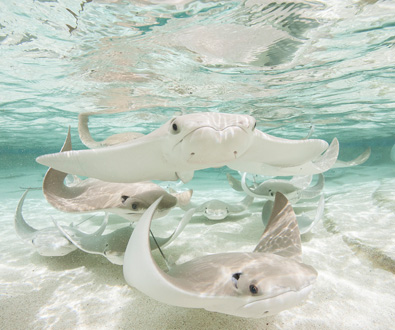
2016年9月27日
Anything alive has DNA, whether it lives on land, in the air, or in water. We caught up with Bill Van Bonn, DVM, Vice President, Animal Health at the Shedd Aquarium in Chicago to learn about their microbiome project. With support from The Grainger Foundation, and in partnership with Argonne National Laboratory, the University of Illinois, Illinois Institute of Technology and the United States Department of Agriculture, this innovative project is using an Illumina MiSeq System to study the unique relationships between the countless unseen living organisms that share environments with the aquarium’s animals.
What are the goals of the microbiome project and how did it begin?
Our microbiome project seeks to understand how we can manipulate environmental habitats to create microbial communities that are optimal for animal health. The project was born from years of observations that underscored the need for better data on the impact of managed environments on microbial communities. In particular, our work with cetaceans like whales, dolphins, and porpoises, led us to suspect that (as with human health) a heavily managed or sanitized environment may be less beneficial than one that favors a more diverse microbiome.
How has the MiSeq System benefitted your research?
The Shedd Aquarium is a public display facility with over 2 million visitors each year. Our laboratory has large windows that showcase the MiSeq as the keystone instrument, allowing visitors to see into the space and learn about our research. Visitors are often surprised to learn that this work is being done by an aquarium, and excited about the potential for what we will be able to discover with next-generation sequencing.
We named our MiSeq “Horton” after the Dr. Seuss character who could “hear” the millions of tiny but important creatures that were once invisible. We love having Horton in the lab as he is a symbol of the exciting aspect of discovery that permeates our work. The personification of the instrument seems to resonate with visitors of all ages.
The MiSeq makes it possible for us to survey microbial communities from hundreds of samples from around the aquarium in a single run. With a small team and many unanswered questions, the ease of use and ability to move rapidly from sample to discovery is critical.
What’s an example of something you’ve learned from your research?
At Shedd Aquarium, we are a “built environment” that replicates natural habitats for 32,000 animals. We are also the most-visited cultural attraction in Chicago. These features make our facility a unique place to observe how microbes of humans and animals interact and to test hypotheses in ways that would not be feasible in nature.
As part of our mission to connect visitors to the living world, we offer various hands-on experiences like our Stingray Touch exhibit. A seasonal outdoor habitat, Stingray Touch saw more than 430,000 guests in the summer of 2015 and gave us a unique opportunity to look at the interplay between humans and cownose rays. Our study found that although the rays’ habitat contained increased microbial diversity as the season progressed, our world-class veterinary team was unable to detect any difference in health outcomes for the animals. In fact, when compared to a control group of rays housed behind-the-scenes, the visited rays had lower heart rates during their exams.
What impact do you expect your research to have on marine biology and/or aquariums?
Through the A. Watson Armour III Center for Animal Health and Welfare at Shedd Aquarium, we are committed to continuously advancing the science behind aquatic animal care. As the first aquarium to characterize the microbial ecology of our environments, we expect to become a resource within the zoo and aquarium community. We hope our findings will help us better care for aquatic life not only in zoological settings but also in rivers, lakes, and oceans.


